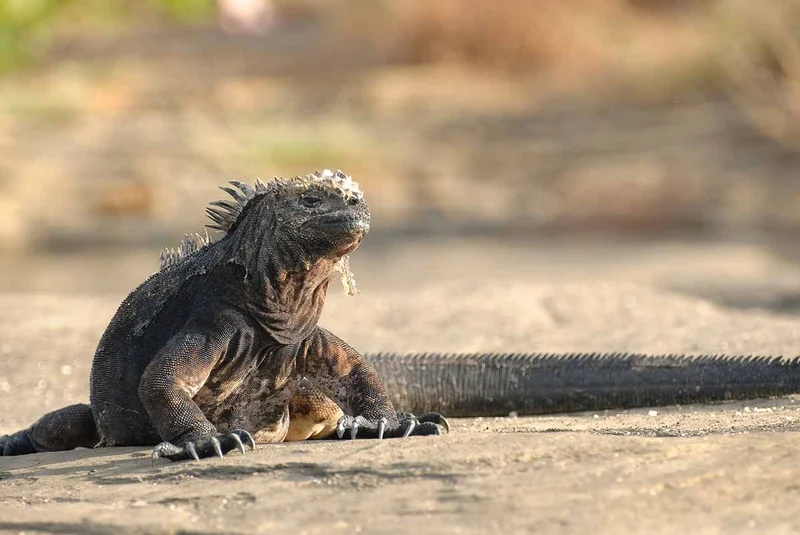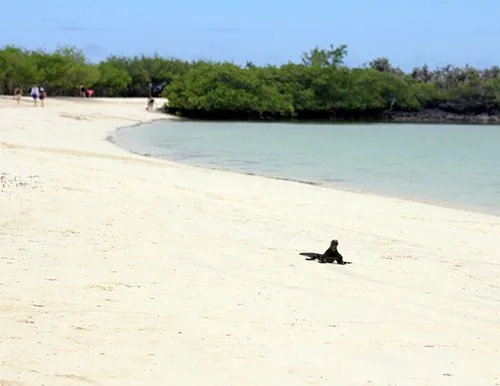
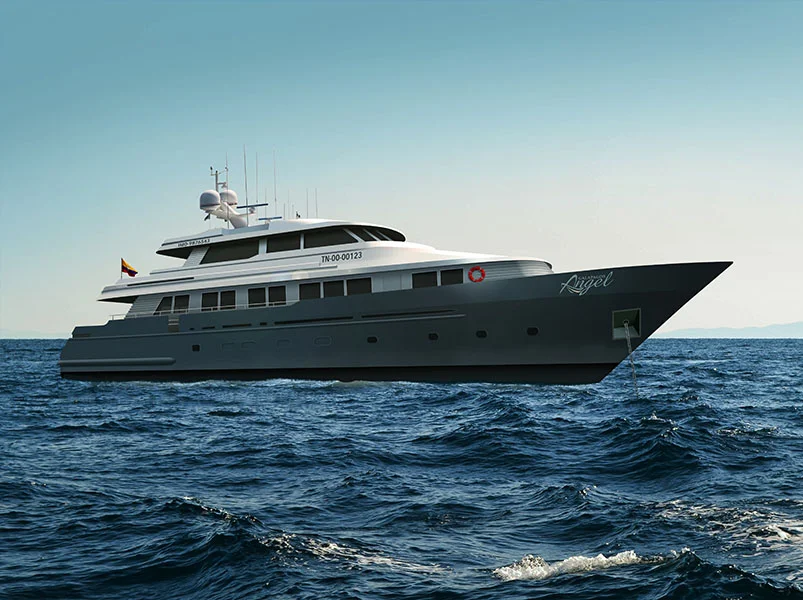
The Galapagos Angel 8-day Cruise "A" is a comprehensive tour of the Galapagos Islands, visiting a variety of islands with unique landscapes and wildlife. Guests will have the opportunity to see blue-footed boobies, Galapagos sea lions, giant tortoises, and more. The cruise also includes visits to lava tunnels, lava flows, volcanic craters, cliffs, and beaches.
8 Day Galapagos Itinerary
Day 1: North Seymour Island
AM: Baltra Airport Arrival
Early morning flight to Baltra from Quito, Guayaquil or Quito.
Arrive at Baltra island in the early morning. Galapagos Angel will meet you at immigration and luggage claim and transfer you to your yacht. After being shown your cabin, you'll have time to relax before the welcome briefing and lunch.
PM: North Seymour
North Seymour is home to many species of birds, including the magnificent frigate bird, the blue-footed boobies and Galapagos Sea Lions. North Seymour is a result of a series submarine lava flows that contained layers of sediment. It is known for its dry vegetation.
Day 2: Santiago Island: Chinese Hat Islet & Bartolome Island: Pinnacle Rock
AM: Chinese Hat Islet
The small island is situated near the Southeast coast of Santiago Island. The islet gets its name from its distinctive shape. The Chinese Islet offers a variety of geological features, including lava flow and tunnels. Some of these lava flows formed under the sea and were then raised to above the level of water. This is indicated by the presence of corals heads.
PM: Pinnacle Rock
Bartholomew Island is where you will find the famous Pinnacle rock. Bartholomew is an extinct volcanic island with red, orange and black formations, as well as green. You will be able to enjoy the most spectacular views from the top of the mountain (about 40 or 30 minutes). Visit a beautiful, small beach that is surrounded only by vegetation on the barren island. This beach offers great snorkeling opportunities. You may see Galapagos Penguins and even swim with them.
Day 3: Genovesa Island: Darwin Bay & El Barranco
AM: Darwin Bay
Darwin Bay's white-sanded coral beach includes a trail of 0.7km that takes you through mangroves teeming with birds. You can see Nazca, Red-footed, and Swallow-tailed Gulls. We'll see tidal pool where playful sea lions play. The view from the cliff is spectacular at the end.
PM: El Barranco
El Barranco is also called Prince Phillip's Steps. It's a steep and rocky trail that climbs a high rock cliff face. From here, you can enjoy a magnificent view. Palo Santo plants, Galapagos Storm Petrels and Galapagos Doves can also be found here.
Day 4: Santiago Island: Egas Port & Rabida Island
AM: Egas Port
Egas Port (also known as James Bay) on Santiago Island, is the home of curious Galapagos Hawks and fast-footed Galapagos Lava Lizards. This trail takes you to the coast with its beautiful tide pools, grottos and fauna. Galapagos Furseals are bathing in the sunshine. It is also an excellent snorkeling spot.
PM: Rabida
Rabida Island, or Jervis is a colorful island with volcanic diversity. It's also a good snorkeling spot. After a short hike you'll reach a breathtaking lookout where you can enjoy the stunning landscapes. Birdwatchers will love the island. There are many species, including finches of all kinds, Galapagos flycatchers (also known as Galapagos Vermilion Flycatchers), Galapagos Hawks, and brown pelicans.
Day 5: Santa Cruz Island
AM: Fausto Llerena Breeding Center
The "Fausto Llerena Tortoise breeding center" in Puerto Ayora is where giant tortoises in captivity are raised. The center is home to tortoises that range in size from 3 inches (new hatchlings), to 4 feet long adult. The subspecies of giant tortoises interrelate with each other, and older tortoises have become accustomed to stretching their heads out for photos. They are raised until the babies reach about 4 years of age and are strong enough to live on their own.
PM: Highlands
The highlands are easily accessible by bus, and their deep green contrasts beautifully with the lower, drier part of the island. Scalesias are the dominant vegetation of the highlands, creating a lush forest. Walking through the lava tunnels is an amazing experience. They are over a half-mile long and underground. You'll be served lunch here.
Day 6: Española Island: Suarez Point, Gardner Bay, Gardner Islet & Osborn Islet
AM: Suarez Point
You can see blue-footed, Nazca, and albatrosses on the path to Suarez Point. The island hosts nearly all 12,000 waved albatross pairs in the world. The large albatrosses launch themselves from a stunning cliff on the oceanfront. The famous blowhole will be visible. It shoots water up into the sky. Landscape photography is a great way to capture the beauty of this area.
PM: Gardner Bay, Gardner Islet & Osborn Islet
The Gardner Bay is the destination of this excursion. You can either walk along a beautiful white-sanded beach in the middle of a sea lion colony, or jump into the water and swim with pups. On the beach, you may see mockingbirds.
Day 7: Santa Fe Island & South Plaza Island
AM: Santa Fe Island
Santa Fe Island's (Barrington), on its northeastern coast, is home to a small bay with an anchorage. Two visitor trails lead to the bay: one leads to an impressive scenic view from high on a cliff and another stretches between a small sandy beach and a prickly cactus forest.
PM: South Plaza Island
Opuntia Cacti now cover this small island formed from rising lava. The island is home to a large sea lion colony as well as vibrant yellow and red land Iguanas. Sesuvium is the most distinctive plant. The color of the Sesuvium changes from a yellowish green to a reddish hue during the wet season.
Day 8: Santa Cruz Island
AM: Black Turtle Cove
Black Turtle Cove is located in Santa Cruz's northern region. The inlet, which is enclosed by mangroves, is only accessible via dinghy. This shallow cove provides a safe haven for marine life. Here, you can often see black-tip or white-tip coral reef sharks as well as sea turtles and various rays.
After: Baltra Airport departure
You will then be taken to the Baltra Airport in time to catch your return flight to the mainland.
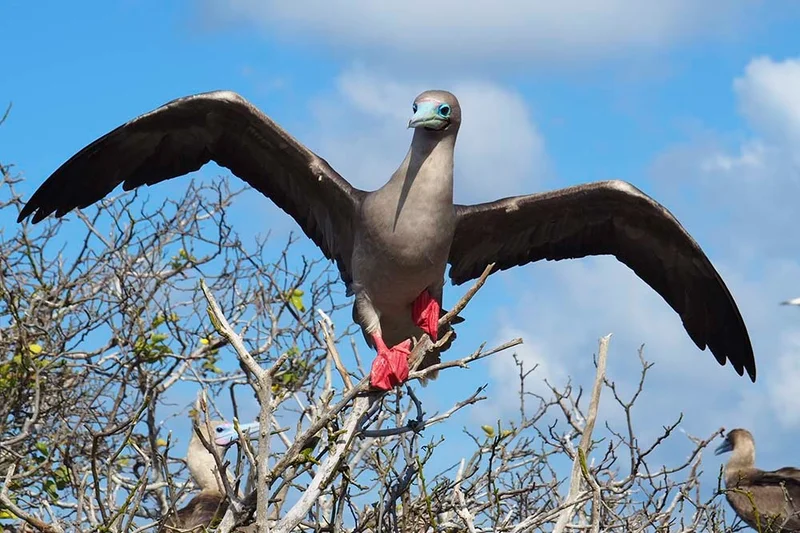
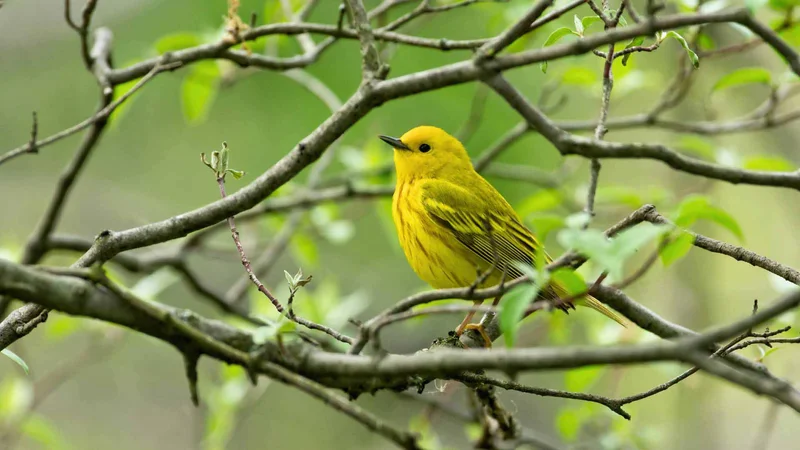

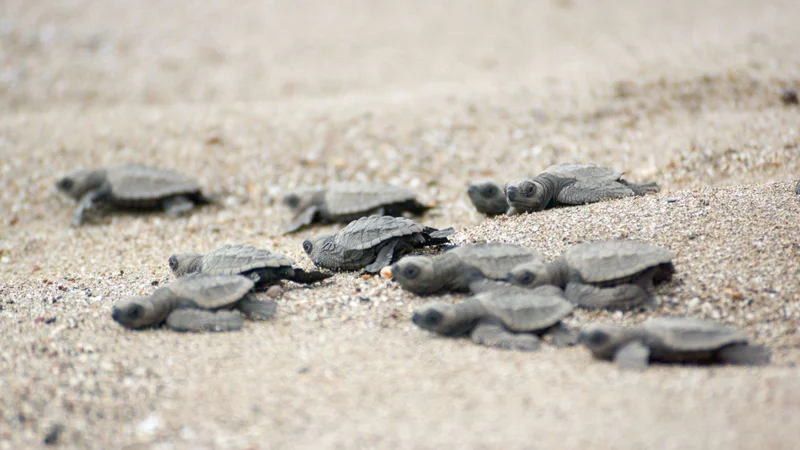
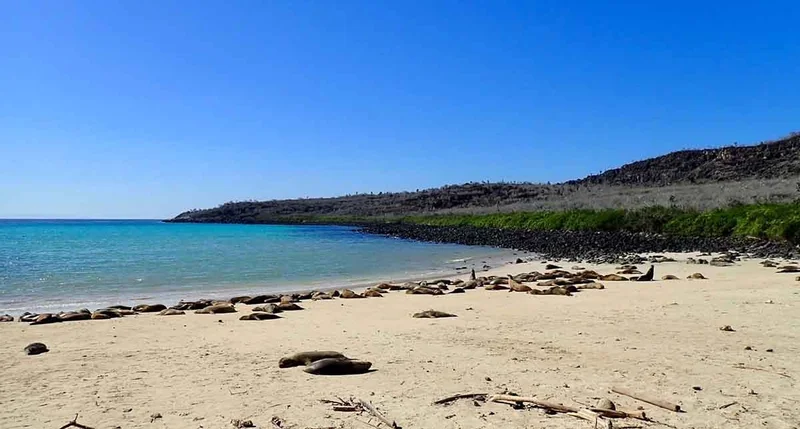





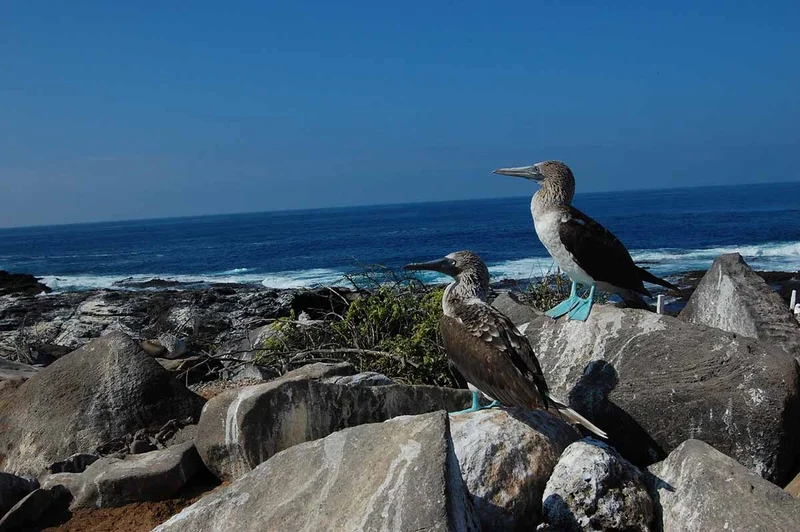

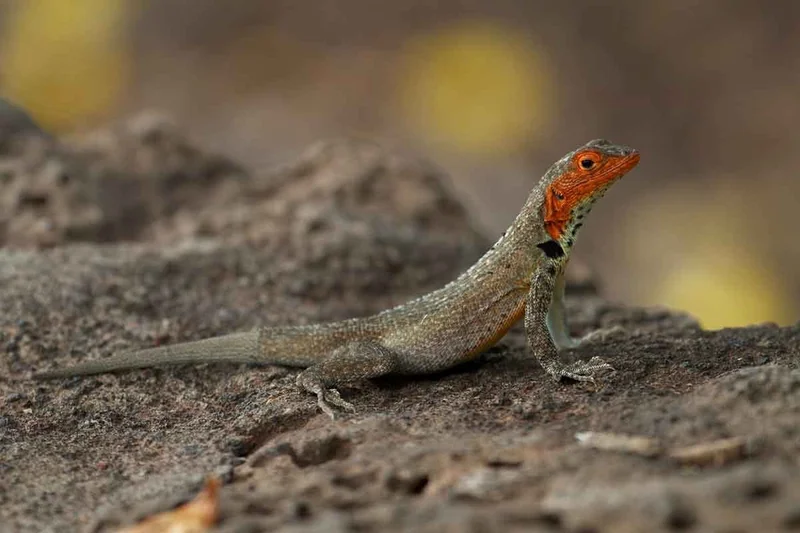
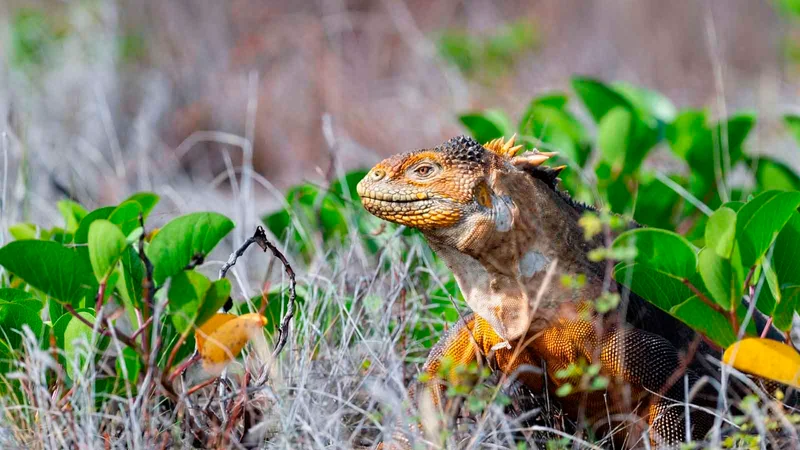
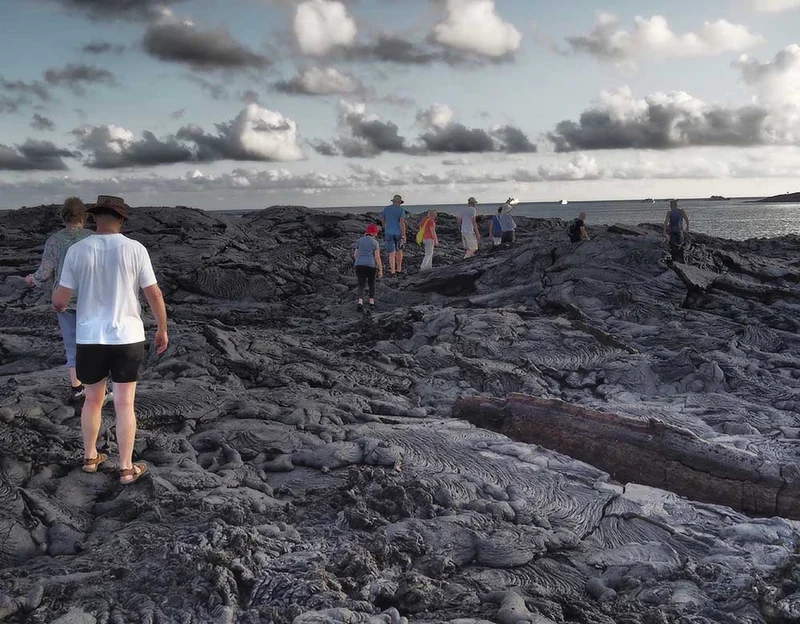
8 Day Galapagos Itinerary Includes
- All meals and excursions
- Transfers in the islands
- Bilingual National Park Guide
8 Day Galapagos Itinerary Does not Include
- Roundtrip Airfare to / from Galapagos
- Alcoholic drinks
- USD 200 Galapagos National Park fee
- $20 Transit Control Card
- Travel / medical insurance
- Tips
- Personal Expenses
8 Day Galapagos Itinerary Highlights
- Swim with sea lion pups at Gardner Bay.
- See sea lions and colorful land iguanas on South Plaza Island.
- Take a walk through the lava tunnels on Santa Cruz Island.
- Snorkel with black-tip and white-tip reef sharks, sea turtles, and rays at Black Turtle Cove.
- Hike to the top of Pinnacle Rock on Bartholomew Island for stunning views of the surrounding islands.
Itinerary Map

Dates & Promotions
Dates |
|---|
No data |
Animals you might see on this itinerary:
More information about the Galapagos Islands you visit in this 8 day itinerary:
Galapagos Angel 8-day Cruise "A"
Why travel with us?
Similar Itineraries


